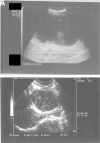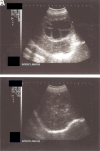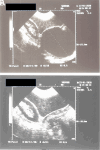Percutaneous Treatment of Hydatid Cysts with the Örmeci Technique
- PMID: 39115158
- PMCID: PMC11181174
- DOI: 10.5152/tjg.2024.23286
Percutaneous Treatment of Hydatid Cysts with the Örmeci Technique
Abstract
Background/Aims:: The percutaneous route is accepted as the most convenient course in the management of hydatid cysts (HCs). The aim of this study is to analyze the efficacy of the Örmeci technique used in the treatment of hydatid cysts.
Materials and Methods:: This is a retrospective cohort study. Patients with HCs who presented to the Ankara University Faculty of Medicine, Department of Gastroenterology since 1991 were included. Patients with World Health Organization cystic echinococcosis (WHO-CE) types 1, 2, 3A-3B live cysts who were treated percutaneously at least once and followed up after a minimum of 6 months were analyzed.
Results:: A total of 1556 cystic lesions in 1035 patients have been presented to our department since 1991. Five hundred forty-four live HCs in 479 patients were treated with the Örmeci technique. The mean follow-up time was 59.29 months for females and 57.18 for males. The overall clinical success rate of all treated cysts with the Örmeci technique was 94.5%. After the treatment, a statistically significant decrease was found in all WHO-CE cyst types in terms of cyst sizes (P < .001 for all). Mortality, abscess and fistula formation, sclerosing cholangitis, and drug toxicities were not detected. Only 2 patients experienced reversible anaphylaxis during the treatment among 544 cysts (0.36%).
Conclusion:: Hydatid cysts can be treated percutaneously by the Örmeci technique with a high success rate for WHO-CE type 1, 2, and 3B. The Örmeci technique is an economic, simple, cheap, and repeatable outpatient procedure. It can be chosen as the first-line therapeutic modality in suitable patients with HCs.
Conflict of interest statement
Figures





References
MeSH terms
LinkOut - more resources
Full Text Sources
